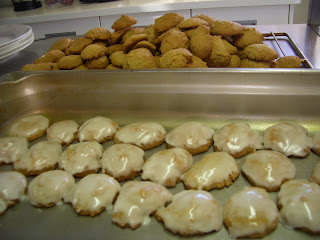Often overlooked in favour of its more famous Winelands neighbours, Wellington nevertheless has a wide selection of its own attractions to entice and enthral visitors.
Driving through the Western Cape’s idyllic Winelands, one does not expect to see a herd of buffalo happily chewing the cud in a flower-filled field. Thankfully, they are not the notoriously bad tempered African buffalo that counts itself among the continent’s Big Five. No, these are Indian water buffalo, originally from Australia, and farmed by a lawyer turned cheese maker. Yes, in the hills surrounding the quiet Winelands town of Wellington it seems you will find almost anything! The lawyer in question is Wayne Rademeyer, who hung up his gowns to focus on his first love: cheese. Today, his small herd of water buffalo produce the only authentic buffalo mozzarella in South Africa.Not far off, on the flanks of the Groenberg, the folks at Foxenburg get their milk from a herd of rather less
intimidating goats, but their crumbly feta, fresh chevres and soft cream cheeses are equally delicious. Every cheese on the farm is made by hand according to age-old techniques, using pure goat’s milk from their herd of free-range animals. The herd forages freely on the vegetation of the Groenberg – the aptly named “green mountain” – giving the Foxenburg cheese its unique flavour or distinctive terroir. Terroir is, of course, a term more usually associated with fine wines, and happily the vineyards in and around Wellington have that by the barrel.
Although often standing in the shadow of its more glamorous Wineland neighbours Stellenbosch and
Franschhoek, the vineyards of Wellington are known for having some of the best soils in the country, and there are wineries galore waiting to be explored.
Not far from the cheeses of Foxenburg, you will find the wines of Welbedacht. This wine estate is equally famous for what is in the bottle as for the day job of the winemaker’s son, Schalk Burger Jnr, who is one of South Africa’s bestloved rugby players. The winery produces a range of wines, including the premium “No. 6”, named for the number on Schalk’s Springbok jersey. That is about as close to celebrity as you will find in Wellington, a village that offers a decidedly low-key Winelands experience. In the wineries surrounding the village, you can feel that this is still a farming community, and you will find honest country hospitality and genuine warmth at every stop. Nearby Doolhof is certainly worth a visit. Tucked away in a lush valley between the Groenberg and the Bain’s Kloof Pass (worth the drive for the wonderful views), the estate is the kind of place where you could easily while away mostth century wagon of a day. The picturesque Kromme River flows through the property, and in 2007, a River Walk was laid out to allow visitors to wander at leisure. The meandering path runs for several kilometres across the estate, and a number of carefully laid out picnic sites are available along the way. If that all sounds like too much hard work, then simply settle in and sample some of Doolhof’s delightful wines. The tasting room, situated in the original 19th Century house, spills out onto a terrace. With the light meals on offer, it is a wonderful way to spend a summer afternoon.
And if you find yourself unable to head back to the city, simply check in at Grand Dédale Country House, which offers fine five-star accommodation right on the estate. Wellington also produces excellent brandies, and it is easy to meander through the stills of the valley. Savingnac de Versailles offers brandy and chocolate tastings, while at De Compagnie an 1849 alembic copper still drips out fine brandy. Upland Organic Estate boasts organic brandy and grappa, with similar snifters on offer at Nabygelegen. Oude Wellington Wine and Brandy Estate is a good spot to end off a morning, with the Oude Wellington Restaurant offering wonderful South African cuisine. Once well fed and watered, do not leave town without a short stroll along the high street. The Dutch Reformed Church dominates the skyline, along with a statue of Dr Andrew Murray, a missionary who was instrumental in establishing schools and colleges in the area. The nearby tourism office can also point you in the direction of the Anglo-Boer War Blockhouse. The most southerly relic of the war that devastated the country at the turn of the 19th century, this was one of a number of fortified Block Houses built by the British to protect the railway line from Afrikaner commandos, and is worth a visit for history buffs. There is quirky history to be found all over town, from the very first all-steel bridge to be built in South Africa – still in use today at Lady Loch Road – to the dusty rooms of Ouma Granny’s House which will whisk you back in time. There is a distinct feeling that time already moves a little slower in Wellington, which is all the more reason to plan your own trip to this quiet corner of the Cape’s beautiful Winelands.

